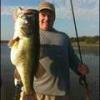Anytime I see subjects or articles like this in a book, magazine etc. I try not to even read it. It will just cloud my mind with information that I am better off without. I did read your post and admire the thought that went into it but don't think I should think about fishing this way to be better at it or gain a better understanding of catching fish. I choose to keep it simple because at different time most of those things are important or most important. Sometimes those things including depth, which was most important, matters very little. Breaking things down like this and giving them numerical values causes over thinking simple things (at least to me) and what I call knowledge constipation. Knowledge constipation is having so much #?&% in your head that you can't get anything useful out of your head to use to catch fish. A success formula that causes this much thought will cause me a lack of success.
I personally take all the information I have learned through years of fishing and make everything as simple as possible. That way my thoughts and decisions are clear and I have more confidence in the decisions I make since they were easier and quicker to make based on my simple thought process.


